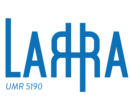Scope note for the class Archaeological Survey – U1 Back
Validated
Scope note
- Text
This class comprises any coherent set of systematic research activities aimed at recording the presence and properties of material archaeological remains present at the earth’s surface, by means of direct observation in the field.
Archaeological surveys are characterised by coherence in time (they consist of a single campaign or season of field research), aims and goals (as defined by the Institution carrying it out), methods, and geographic scope (study area). For example, a University may run a 4-year project to conduct systematic intensive surveys in the hinterland of a specific Roman town, aiming to record all activities relating to agricultural land use. Each field season within such a project forms one instance of U1 Archaeological Survey
An archaeological survey (U1) consists of multiple consecutive investigations of land plots, instances ofU4 Surface Survey Units, involving the making of field observations, the collection of archaeological materials, and/or the subsequent processing of those materials, according to a standard set of protocols.
While the particular circumstances of the start and end of an archaeological survey vary by case, an instance can typically be said to have come into existence upon the start of the first survey activity and covers the immediate activities associated with the survey such as fieldwalking and preliminary material studies. It ends upon the end of the last survey activity. All publication activities and scientific analyses that may be involved to better understand the results of the survey activities are a part of the overall Project (PE35) constituted for specific research objectives, and not part of the archaeological survey. An instance of PE35 can consist of one or multiple instances of U1 Archaeological Survey but may also involve instances of A9 Archaeological Excavation as well as other activities.
- Language
- en




Comments
No comment found.